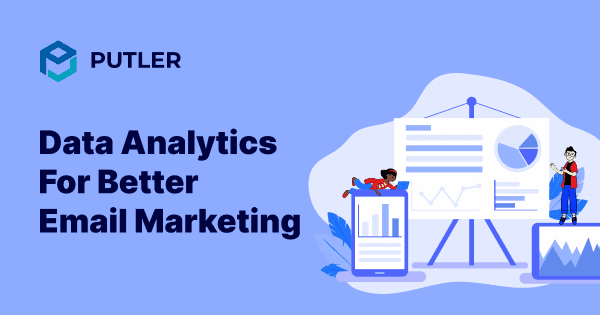In an entirely data-driven world, email marketing still remains the first choice of every B2B marketer. Thus it’s very critical to create data-driven email marketing campaigns.
With over 350 billion emails sent daily, emails remain a go-to marketing tactic. However, with fierce competition, how do you ensure that when you send a mass email in Outlook, recipients are not just receiving your email but also opening them?
While email marketing is the best marketing option to deliver accurate consumer data, it’s crucial to ensure your efforts aren’t going in vain. To ensure the success of your email marketing campaigns, there are several useful data analytic techniques you can use.
Read on to explore some easy-to-implement techniques from data analytics.
Importance of Data Analytics in email marketing
Like every other marketing campaign, measuring your email campaign’s performance is also essential. In addition to this, as per a McKinsey report, email marketing is 40 times more effective than any other marketing platform, including Facebook, Twitter, etc.
Without constant evaluation and analysis, a business can’t possibly demonstrate how their campaigns are performing and if they are generating the desired outcome.
Types of Data Analytics
There are four types of data analytics for different marketing purposes. They all collaboratively aim to evaluate the data insights to improve the effectiveness of your email marketing campaigns.
Demographic Data
Demographical data is an important and beneficial data type, consisting of important information and details about your target audience, such as location, interest, age, gender, etc.
You can utilize these insights to develop email marketing campaigns that are highly customized to meet the interest of your target audience.
Consumer Preference
Consumer preference is a dynamic data analytics approach that measures the changes and improvements in people’s interaction with your business.
This data can be measured by the utility of the customer’s favorite brand etc. A business allows the customers to rank a couple of goods they offer based on utility level. These preferences are independent of prices and income.
Transactional Data
The data comprised in this type include first and last purchases, the items, number of purchases, time, data, average order value, product purchase history, and amount spent by a customer.
This data can help you enhance your email marketing strategies by making them more customized and focused on customers who frequently purchase from you.
Putler is a tool that provides detailed customer transaction data. Explore it here.
Behavioral Data
The key to implementing successful marketing campaigns is understanding the audience’s interest. Behavior data in data analytics serves as an accurate predictor that can help you generate the desired outcome by creating customized strategies.
Behavioral analysis is a procedure that provides valuable data and insights regarding how the targeted audience behaves and interacts with your email.
Different ways to use Data Analytics in email marketing campaigns
Incorporate these four ways to use data analytics in your email marketing campaigns to drive better and more effective results:
Segmentation
Email segmentation is an effective method that divides the email subscribers into small segments based on different criteria. Segmentation has strong potential to generate a revenue of 58%. However, according to market research, 42% of business marketers are not utilizing this method.
Typically, the segmentation method is used as a personalization practice to generate and deliver customized and relevant email campaigns to subscribers.
There are multiple ways and tools you can use to segment your customer data. Putler is one of them.
Here’s how Putler helps segment customer data, product data and order data based on various parameters.
Automation
If you have no idea what your audience is looking for or market trends, you are less likely to create effective email marketing campaigns. Data analytics has made it possible to ease the efforts of marketers by utilizing the automation tool. Automation is an important tactic in segmentation as well.
Automation is a practice where emails are scheduled to send out to the customer with a targeted message at a specific time. For instance, if someone has added a product to their cart online and forgot to proceed further, a marketer can use this touch point by sending a reminder email to the customer.
To maximize the effectiveness of your automated campaigns, start by ensuring your emails reach the inbox. You can warm up emails with Zerobounce to build trust with email providers and enhance deliverability rates.
Timelessness
It’s essential to determine the right time to send your emails. No matter how personalized and automated your email campaigns are, they can end up in junk mail without a proper timeline. Like segmentation, devising your subscriber list into groups can help you decide the right time to send out emails.
Conclusion
Conducting data analytics for your email marketing campaigns isn’t too tricky. Data analytics can reveal valuable insights – customer behavior, market trends, ad clicks, etc. – that a business could leverage in their marketing campaigns.
- Email Marketing Segmentation: Segment customers and send them targeted emails from Putler
- Marketing Analytics: Everything you need to know!
- Customer Analysis: Good Customer Insights for Better Marketing
